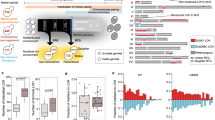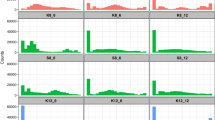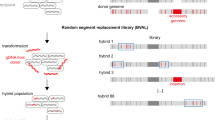Abstract
GENETIC recombination between mutant strains of Escherichia coli strain K12 is governed by a system of mating types1,2. The first two mating types to be discovered were called F+ and F−. In crosses the F− F+ parent donates genetic material to the F− parent. The progeny are predominantly F+. At the same time it was discovered that the Ffactor was infectious, that is, if F+ and F− strains were mixed and the organisms of the F− strain re-isolated, a proportion had become F+. It was therefore possible that the F+ state of the progeny was secondary and that any F-zygotes became infected by other F+ cells.
This is a preview of subscription content, access via your institution
Access options
Subscribe to this journal
Receive 51 print issues and online access
$199.00 per year
only $3.90 per issue
Buy this article
- Purchase on Springer Link
- Instant access to full article PDF
Prices may be subject to local taxes which are calculated during checkout
Similar content being viewed by others
References
Lederberg, J., Cavalli, L. L., and Lederberg, E. M., Genetics, 37, 720 (1952).
Hayes, W., J. Gen. Microbiol., 8, 72 (1953).
Hayes, W., Cold Spring Harb. Symp. Quant. Biol., 18, 75 (1953).
Jacob, F., and Wollman, E. L., C.R. Acad. Sci., Paris, 242, 303 (1956).
Lederberg, J., Abstracts, Seventh International Congress of Microbiology, Stockholm, p. 58 (1958).
Author information
Authors and Affiliations
Rights and permissions
About this article
Cite this article
REEVES, P. Role of Hfr Mutants in F+×F− Crosses in Escherichia coli K12. Nature 185, 265–266 (1960). https://doi.org/10.1038/185265b0
Issue Date:
DOI: https://doi.org/10.1038/185265b0
This article is cited by
-
Transfer ofF′ fromEscherichia coli K 12 toEscherichia coli B and to strains ofParacolobacter andKlebsiella
Antonie van Leeuwenhoek (1963)
Comments
By submitting a comment you agree to abide by our Terms and Community Guidelines. If you find something abusive or that does not comply with our terms or guidelines please flag it as inappropriate.



